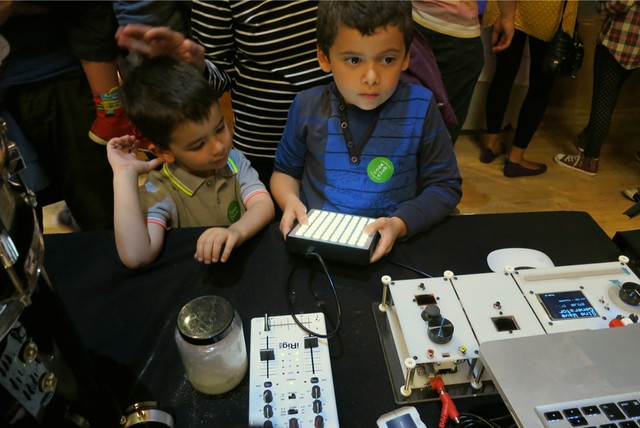State Of Play…
An exposition of practice-based research in progress, RIBA Hub, Manchester, 4-10 July 2011
‘State of Play…’ was an exposition of practice-based research in progress by seven PhD students at Manchester Metropolitan University linked to and coinciding with the Practice As Research Consortium (PARC) North West Carnival event at MIRIAD, MMU 6-7th July 2011. Each member of the Practice, Process and Reflection (PPR) group contributed a short personal reflection ‘On Practice as Research’ to the exposition catalogue.
Photographic and video documentation is available via Flickr and Vimeo.
On Practice As Research
I have both an artistic bent and an aptitude for science, so I’m interested in that area of interdisciplinary activity commonly termed Sci-Art where these practices intersect and interplay.
The scientific experimental method refers to a body of techniques for investigating phenomena and of gathering observable, empirical and measurable evidence subject to specific principles of reasoning. It is such an established and acknowledged means of acquiring new knowledge that its development is inseparable from the history of Science. In fact many would argue that Science is the experimental method.
I’m intrigued by whether its possible to develop a creative counterpoint to this perspective – and so I’ve attempted to formulate my own research methodology – a robust, investigative yet creative research technique and critical reflection tool – an ‘artistic experimental method.’
My approach is to source germane and concise definitions for a set of artistic paradigms – beauty, aesthetics, authorship, process, serendipity and technology misuse – and then apply these as a framework of systematic measures to gauge, reflect on and draw effective conclusions from the outputs of a rolling series of artistic experiments – gathering this ‘evidence’ to help drive the research forward.
While I’m still a little way off a final set of definitions I have made progress, for example:
- Serendipity – the art of making an unsought finding; the ”art of loose blinkers” i.e. the talent and ability to combine systematic approach with intuition, surveillance and hunch; a type of explorative scientific method, a category that may be called abductive.
Hankins & Silverman (1995) assert that “Instruments have a life of their own they do not merely follow theory often they determine theory because instruments determine what is possible and what is possible determines to a large extent what can be thought.”
While I hope that my research methods contribute new thinking and an emerging terminology to future practice as research initiatives I aspire to demonstrate that a decidedly artistic experimental method can indeed help to “determine what is possible and… what can be thought” helping to validate artistic practice alongside scientific experimental method as a means to enhance insight and develop knowledge.
References
Hankins T.L. & Silverman R.J. (1995), Instruments And The Imagination, New Jersey: Princeton University Press

